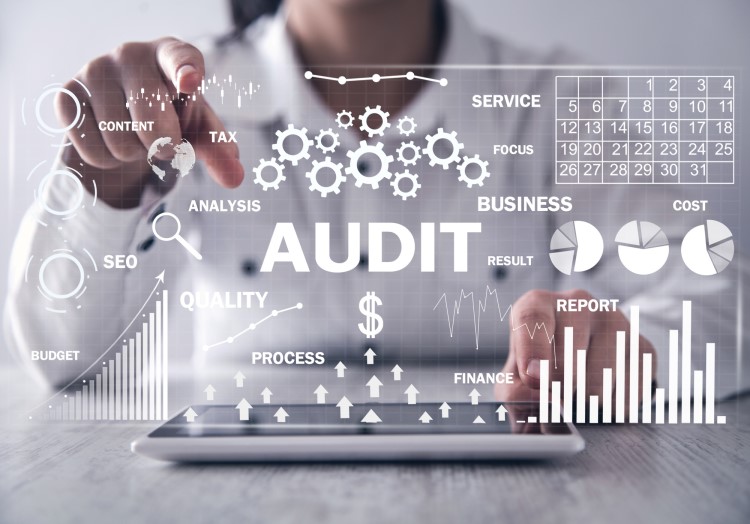
Evaluating Financial Health
Evaluating financial health is a critical step when learning how to audit your business. Start by reviewing your financial statements, including the balance sheet, income statement, and cash flow statement. These documents give you a clear overview of your assets, liabilities, revenue, and expenses. By analyzing your financial statements, you can identify any patterns or red flags, such as high debt levels or declining profits, that might require immediate attention.
Next, focus on cash flow. Positive cash flow ensures your business can meet its short-term obligations without relying on external financing. Look at both operating cash flow and net cash flow to ensure there’s enough liquidity to sustain daily operations. If your cash flow is consistently negative, this is a sign that adjustments may be needed to prevent financial strain. Cash flow analysis is a key part of auditing your business’s overall stability.
Finally, review your budget against actual performance. Compare your projected budget to your actual spending and income. Variances between these numbers can indicate inefficiencies or missed opportunities for growth. For example, consistently overspending in certain areas might point to the need for better cost control. Regularly monitoring these key financial metrics is essential when learning how to audit your business and maintaining long-term financial health.
Assessing Operational Efficiency
Assessing operational efficiency is essential for ensuring that your business runs smoothly and productively. Start by analyzing your workflows and processes to determine how tasks are being completed. Look for areas where tasks may be redundant or overly complex, as this can slow down operations. By mapping out each process step by step, you can identify inefficiencies that might be hindering performance. Understanding this aspect is key when learning how to audit your business.
Next, review resource allocation to ensure that labor, equipment, and materials are being used effectively. Check if team members are being assigned tasks that align with their skills or if resources are spread too thin. Poor resource allocation can lead to delays, bottlenecks, or unnecessary expenses. Look for tasks that take longer than expected or areas where employees might be waiting on resources to complete their work. This often points to opportunities for improvement in your operational flow.
Finally, identify bottlenecks by tracking where delays frequently occur in your workflows. This could be in the form of slow approvals, inefficient communication, or outdated technology. Streamlining these problem areas will improve overall productivity. Regularly assessing your operations allows you to make timely adjustments, ensuring your business remains competitive. As you refine processes, efficiency will improve, providing the foundation for sustainable growth. These steps are essential in understanding how to audit your business and enhancing operational efficiency.
Reviewing Sales and Marketing Strategies
Reviewing your sales and marketing strategies is a key step in evaluating overall business performance. To begin, analyze the effectiveness of your marketing efforts by tracking customer acquisition costs (CAC). CAC helps you determine how much you spend to acquire each new customer. Compare this cost to the revenue generated from those customers to assess whether your marketing campaigns are cost-effective. If your CAC is too high, it may signal that your marketing strategies need adjusting to reduce costs or improve targeting. This is an essential focus when learning how to audit your business.
Next, look at conversion rates to measure how well your marketing efforts are turning leads into actual customers. Track metrics such as website visitors, email click-through rates, or ad impressions, and compare these to the number of sales. Low conversion rates may suggest that your messaging isn’t resonating with your audience or that there are barriers in your sales funnel. Identifying these issues can help you fine-tune your strategies for better performance and higher returns.
Finally, evaluate the overall return on investment (ROI) of your marketing campaigns. ROI shows how much revenue your campaigns are generating in comparison to the amount you’ve invested. Calculate this by dividing the revenue generated by the cost of the campaign. If the ROI is low, consider reallocating your budget to more successful channels or adjusting your marketing tactics. Regularly reviewing these metrics ensures that your sales and marketing strategies are aligned with your goals and driving growth. Understanding these aspects is critical in mastering how to audit your business effectively.
Examining Employee Performance and Satisfaction
Examining employee performance and satisfaction is critical for maintaining a motivated and productive workforce. To audit employee performance effectively, start by using performance reviews that evaluate key metrics like productivity, goal completion, and teamwork. Regular reviews provide feedback on strengths and areas for improvement, helping employees stay aligned with company goals. Tracking individual and team performance can also reveal patterns that highlight areas where processes may need adjustment. Conducting these reviews is an important aspect of understanding how to audit your business from a human resource perspective.
Employee satisfaction plays a major role in engagement and retention. To assess this, you can use anonymous employee surveys that gauge job satisfaction, workload, and workplace culture. These surveys provide valuable insights into how employees feel about their roles and the company. Engaged employees tend to be more productive and committed to the business’s success. By identifying concerns early through surveys, you can address potential issues before they affect morale or performance.
Training assessments are another valuable tool for auditing workforce effectiveness. Regular evaluations of employee skills and training programs help ensure that your team remains up to date with industry trends and best practices. Identifying skill gaps through training assessments allows you to provide targeted development opportunities, keeping your team equipped for success. Together, these methods ensure that employee performance and satisfaction are continuously monitored, contributing to a healthier and more effective workplace. Incorporating this approach helps when learning how to audit your business comprehensively.
Analyzing Compliance and Risk Management
Analyzing compliance and risk management is a crucial part of ensuring your business stays on the right side of legal and industry standards. Regular internal audits help you review whether your business processes align with regulations and legal requirements. These audits can uncover gaps in compliance and provide opportunities to correct issues before they become larger problems. Staying on top of compliance is essential when understanding how to audit your business, as non-compliance can result in fines, legal action, or reputational damage.
Risk assessments also play a significant role in preventing potential issues. By identifying possible risks, whether financial, operational, or legal, you can put safeguards in place to mitigate them. Regularly updating your risk management strategy ensures you are prepared for changes in regulations or market conditions. Keeping up with regulatory updates, both on a local and industry-specific level, is key to avoiding non-compliance. Monitoring new regulations allows you to adapt your processes and train employees as needed to ensure your business operates smoothly.
Incorporating both internal audits and risk assessments into your auditing process helps prevent compliance issues and manage risks proactively. Regularly reviewing your business’s compliance ensures that you are not only following legal requirements but also protecting your business from future risks. This approach strengthens your understanding of how to audit your business effectively and safeguards your business’s long-term success.
Monitoring Customer Satisfaction and Retention
Monitoring customer satisfaction and retention is critical for ensuring your business meets customer expectations and maintains long-term loyalty. Start by regularly reviewing customer feedback, as it provides direct insights into how well your products or services are being received. Feedback forms, surveys, and online reviews are valuable tools for gathering this information. Customer satisfaction surveys allow you to ask specific questions about service quality, product effectiveness, or areas that need improvement. By analyzing this data, you can spot patterns that reveal customer pain points and take action to resolve issues.
In addition to customer feedback, it’s important to track retention rates. Retention rates measure how many customers return to your business after their first purchase or engagement. A high retention rate typically indicates strong customer loyalty and satisfaction, while a declining rate suggests underlying issues that need attention. Monitoring this metric helps you evaluate the effectiveness of your customer service and retention strategies. Tracking service quality is also essential, as consistent service ensures customer satisfaction and repeat business. Understanding these elements helps when learning how to audit your business.
To collect meaningful customer data, use simple tools like post-purchase surveys, email feedback requests, or follow-up calls. Encouraging customers to provide feedback ensures that you get a range of opinions to help improve your business. Monitoring key indicators like feedback, retention rates, and service quality allows you to stay aligned with customer expectations and make necessary adjustments. Incorporating these methods into your process is a key aspect of mastering how to audit your business effectively.
Conclusion
In conclusion, knowing how to audit your business is essential for maintaining efficiency and long-term success. Regular audits help you identify areas for improvement, from financial health to employee performance and customer satisfaction. By continuously reviewing these aspects, you can make informed decisions that enhance operations and ensure compliance. Audits also enable you to adapt quickly to market changes, address risks, and improve your overall business strategy. Committing to regular, thorough audits keeps your business on track for sustainable growth and ensures that you meet both operational and customer expectations.


